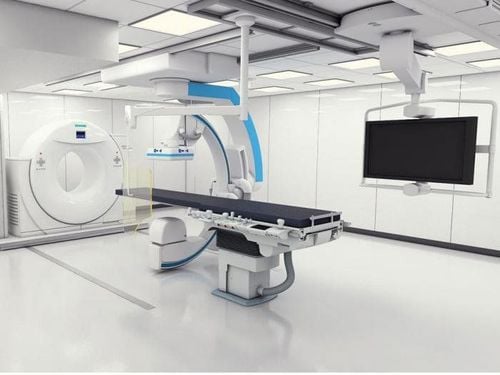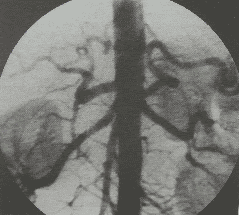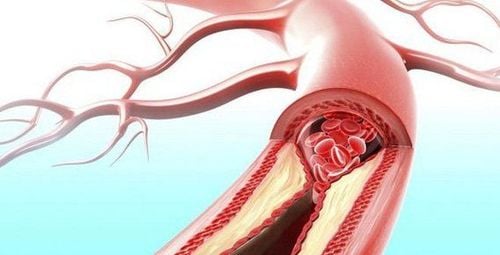This is an automatically translated article.
The article was professionally consulted by Specialist Doctor I Tran Cong Trinh - Radiologist - Radiology Department - Vinmec Central Park International General Hospital.
Lower extremity artery disease is a common disease in the elderly, caused by atherosclerosis. To diagnose the disease, often doctors will order digitized lower extremity angiography to remove the background. This is a modern imaging technique that allows the arteries of the lower extremities to be clearly seen.
1. Overview of lower extremity artery disease
Lower extremity artery disease is a condition in which the inside of the arteries including the aorta and lower extremity arteries narrow, reducing blood flow to the muscles and related organs below. This long-term condition will cause pain on exertion, the longer the patient will have pain even when resting. If not diagnosed and treated early, ischemia can cause necrosis.2. Who is at risk for lower extremity artery disease
Atherosclerosis is believed to be the main cause of the disease. In addition, some of the following subjects are also at risk of lower extremity artery disease:Elderly people (over 70 years old). People with diabetes, high blood pressure, dyslipidemia. Regularly smoke. Pain in the lower extremities with exertion or at rest. There was an abnormality in the lower extremity arteries on clinical examination. Have diseases related to atherosclerosis: carotid artery, coronary artery, or renal artery.

Hút thuốc lá thường xuyên có nguy cơ mắc bệnh động mạch chi dưới
3. What is background digitized lower extremity angiography?
Lower extremity angiography by digital erasure machine (also known as DSA scan), using iodinated contrast agent is a mandatory indication for patients with abnormalities and lesions in the lower extremity arteries. particularly, the iliac artery area in general, when lesions were detected by Doppler ultrasound. Specifically, digital background erasing is indicated for the following cases:Vascular malformations of the lower extremities Suspected trauma causing damage to the blood vessels of the lower extremities Assess the perfusion status of the tumor in the lower extremities . Prepare for limb transplant surgery or radiologic intervention.

Những ai có nguy cơ mắc bệnh động mạch chi dưới
4. Steps of digitizing lower extremity angiography
Digitalized lower extremity angiography includes the following steps and techniques:Step 1: Anesthetize the patient by placing the patient supine on the table, setting up an intravenous line, and administering local anesthesia. In case the patient is excited, unable to cooperate, or scared, pre-anesthesia can be administered. Step 2: Disinfect, anesthetize and choose the technique to insert the catheter. Usually, the technique used is to insert the needle directly into the common femoral artery in the affected limb. Then use the Seldinger technique to insert the catheter downstream (from the femoral artery to the leg) or upstream (from the contralateral femoral artery and then insert the catheter through the contralateral limb to be imaged). In case it cannot be done from the femoral artery, it can be replaced by other arteries such as axillary, arm, ... Step 3: After catheterization, inject drugs and conduct lower extremity angiography. Depending on the imaging method (chasing or capturing each limb separately) and the part to be photographed, the drug will be injected with the appropriate injection volume and speed. Step 4: When the scan is satisfactory, remove the catheter and tube into the vessel. Stop the patient's bleeding by applying direct manual pressure to the puncture site for 15 minutes, then using a lumen closure device or compression bandage for 6 hours.

Chụp động mạch chi dưới số hóa xóa nền cần thực hiện đầy đủ các bước
5. Lower extremity angiography results
The results of lower extremity angiography by digitizing the background eraser must clearly show the structure of the lower extremity arteries. Based on the results, the doctor will evaluate the damage if any and then give the appropriate treatment.Near or distant lesion site. Localized or diffuse lesions. Alternate collateral circulation develops. Below are the characteristics of the arteries.

Chụp động mạch chi dưới số hóa xóa nền sẽ đánh giá được các tổn thương
6. Management of complications during and after lower extremity angiography
During and after angiography of the lower extremities, there may be a number of complications that should be noted, the treatment is as follows:Break or break the lead, intravascular catheter: Surgery or endovascular intervention to remove broken or broken segments with special tools. Arterial occlusion due to thrombosis or atherosclerotic plaque in the artery lumen: Specialist doctor examines for timely treatment by thrombectomy or thrombolytic pump. Bleeding from a torn artery: At the puncture site, tearing or dissection of an artery can cause bleeding. To stop bleeding, it is necessary to stop the procedure, apply direct pressure with your hand, bandage it for monitoring, and poke the opposite side. If after angiography of the lower extremities there is still bleeding at the catheter site or a hematoma, apply compression and ask the patient to lie motionless until the bleeding stops. Venous aneurysm: Endovascular or surgical intervention to manage. Infection: Treat with antibiotics. Lower extremity angiography by digitizing background eraser is an imaging technique that allows the assessment of lesions in the lower extremity arteries because it can clearly show the structure of the region.
Digitization of the lower extremity artery background is an imaging technique that requires a high level of experience of the doctor and the perfect coordination of the patient. In order to achieve high diagnostic efficiency, patients need to choose reputable addresses that have digital scanning machines to erase the background and have modern and standard medical equipment from which to have timely treatment.
Vinmec International General Hospital is a hospital with a full convergence of general and specialized doctors to perform, examine, operate, diagnose and treat diseases. In particular, at Vinmec, digital imaging techniques are performed to remove the background to diagnose images, thereby offering treatment plans for many different diseases and providing optimal treatment results for customers.
Before taking a job at Vinmec Central Park International General Hospital, the position of Doctor of Radiology from September 2017, Doctor Tran Cong Trinh worked at Gia Dinh People's Hospital since 2007. -2017. In his role, Dr. Tran Cong Trinh has participated in guiding the teaching of students, residents, specialists and new doctors entering the department
For examination and treatment at International General Hospital Vinmec, please come directly to Vinmec Health System or register online HERE.













